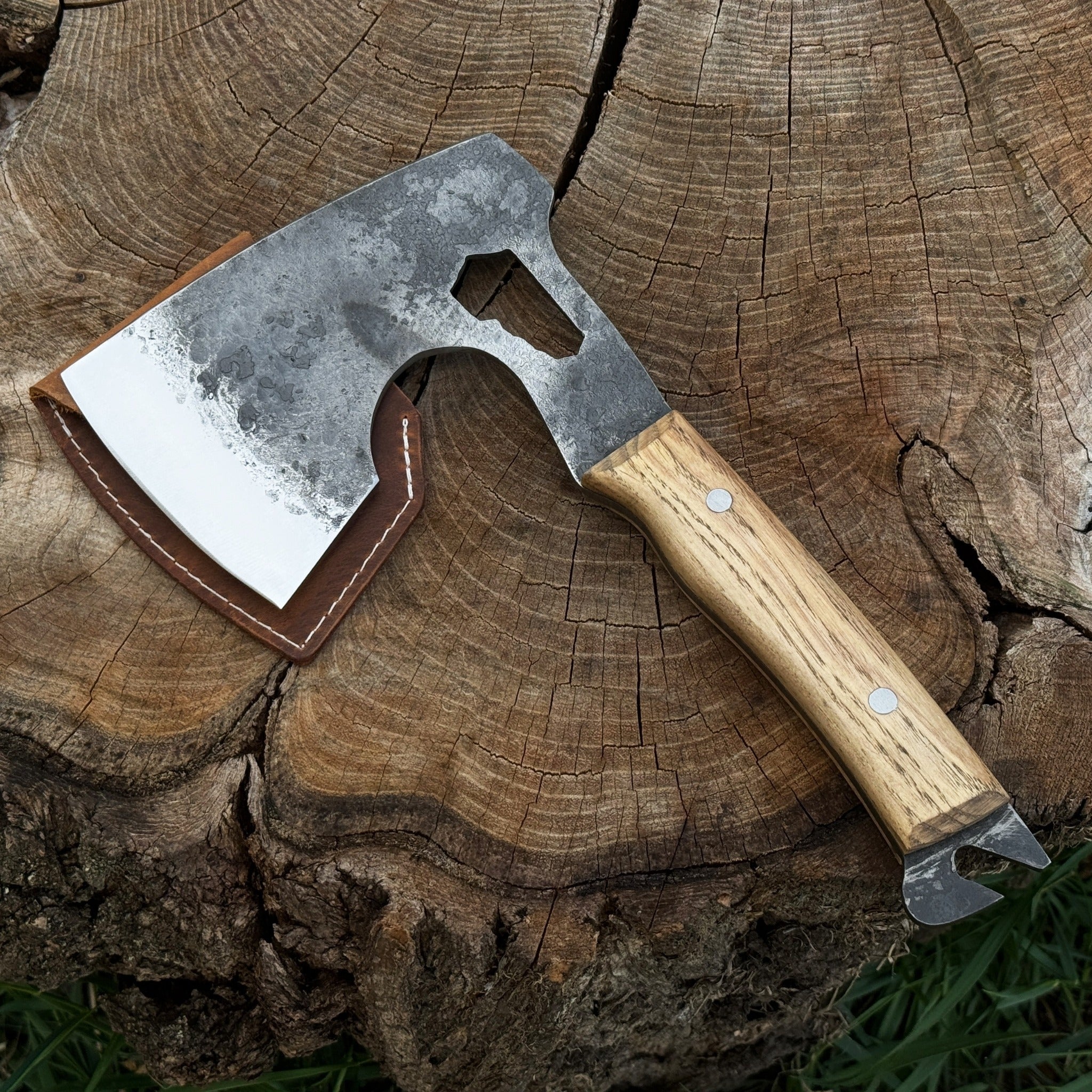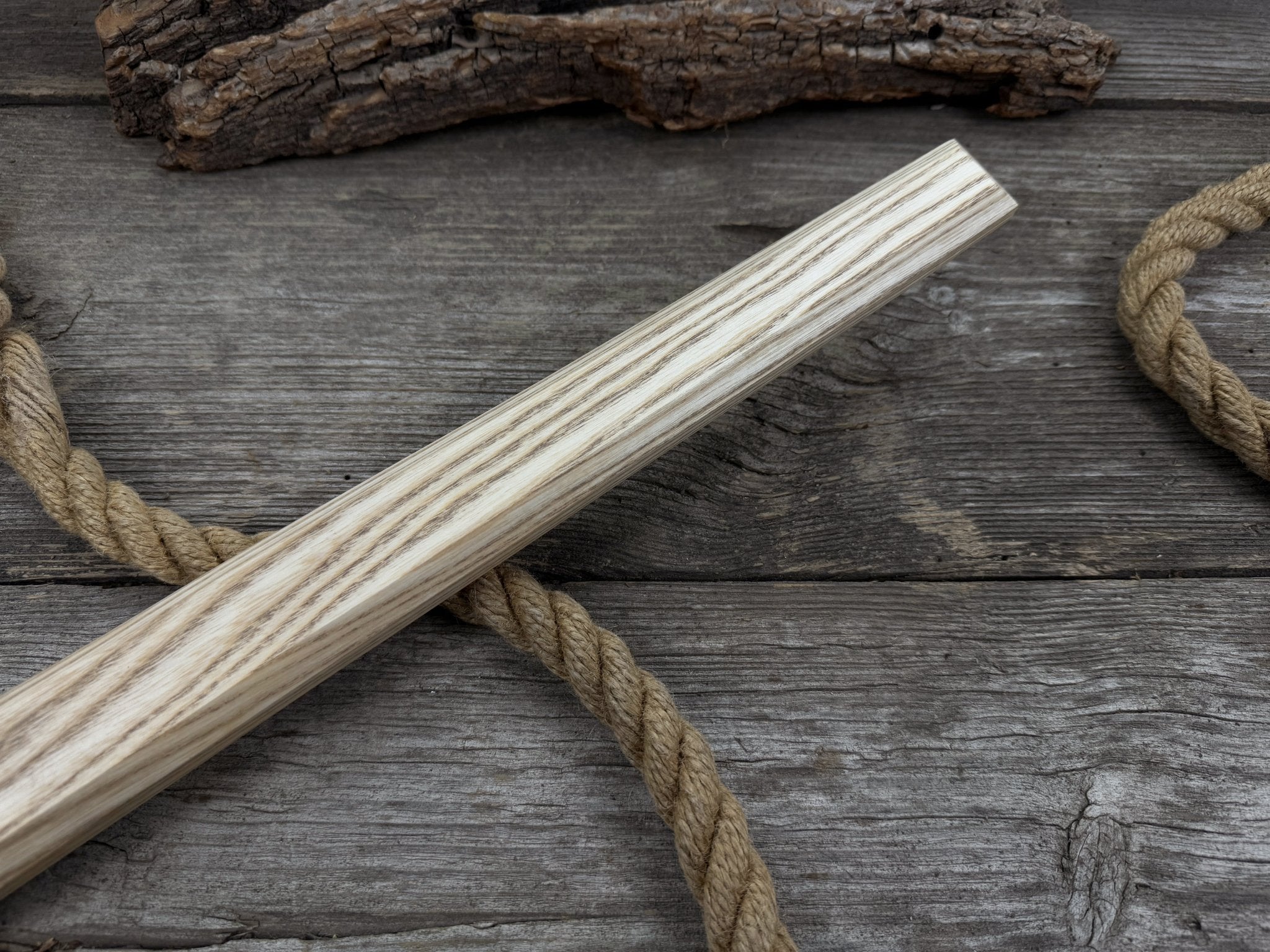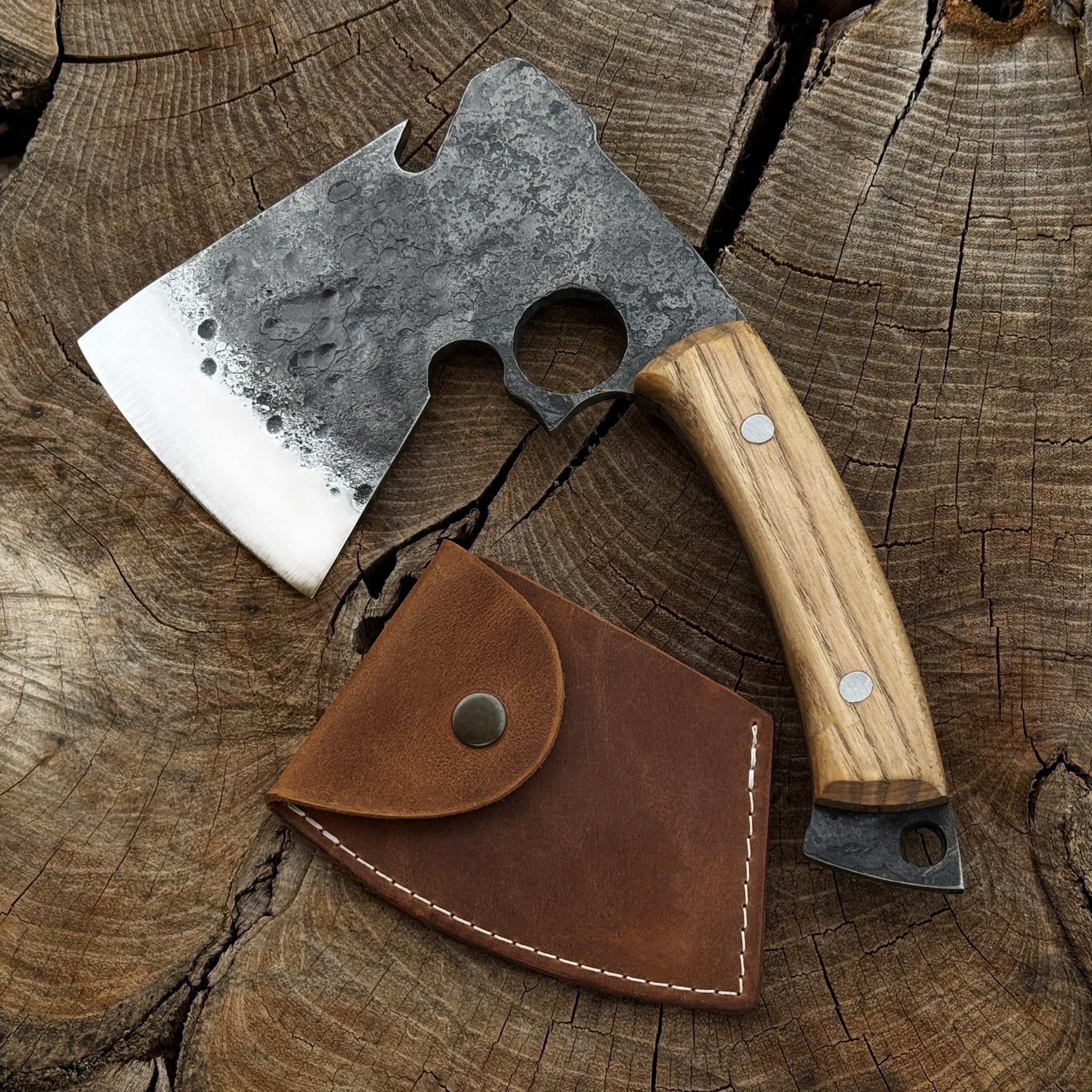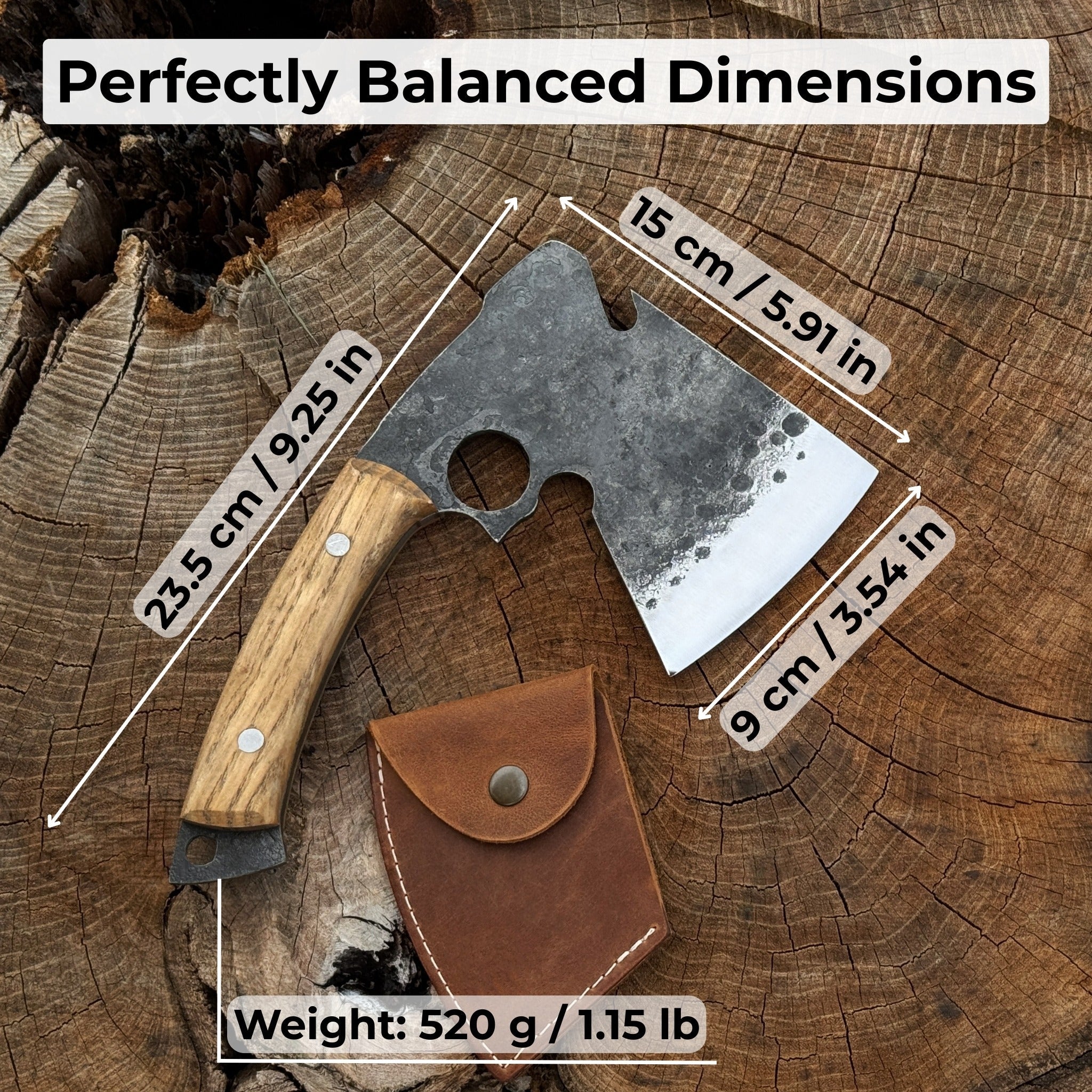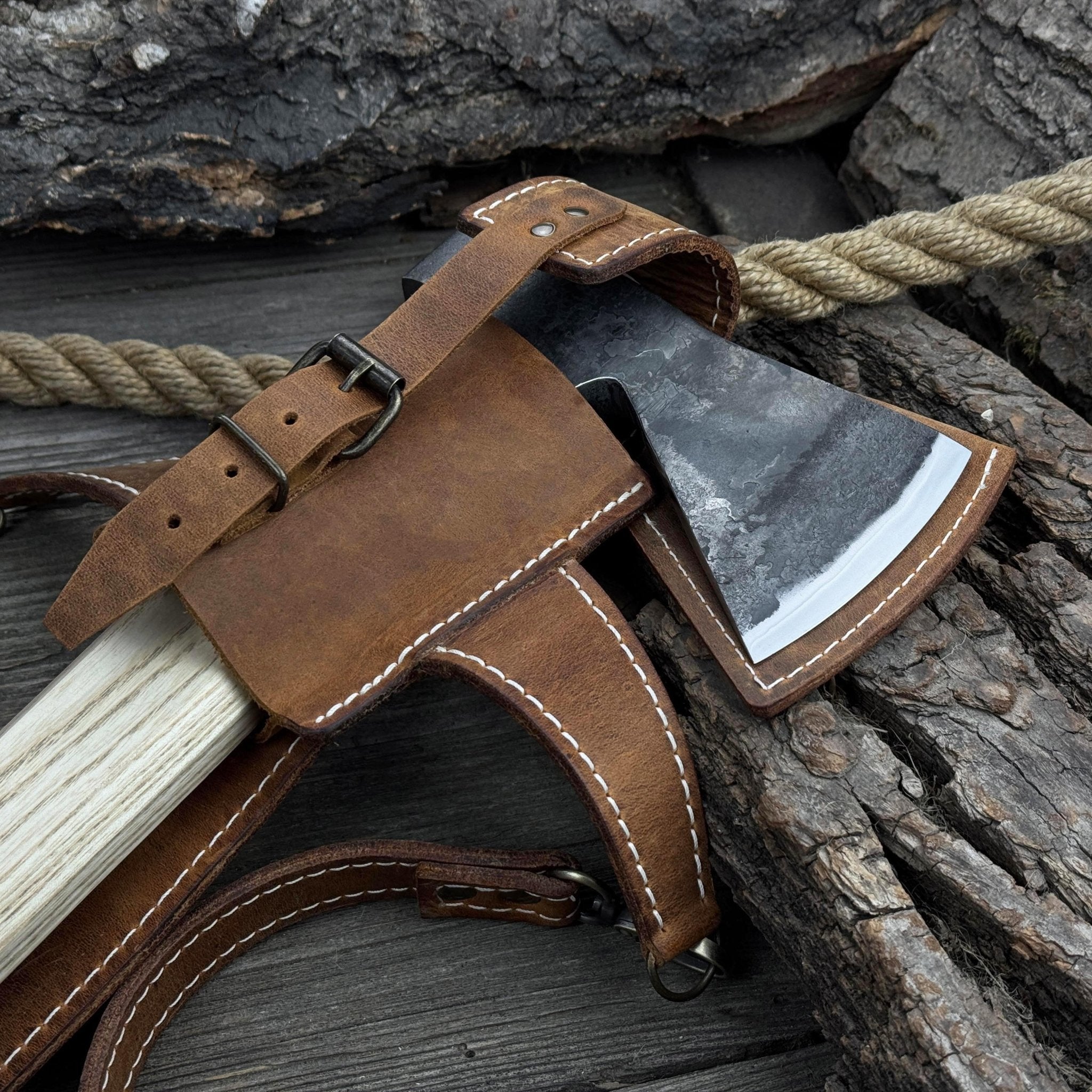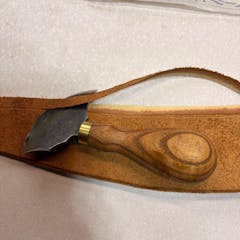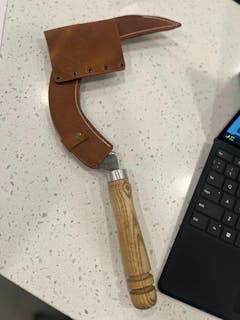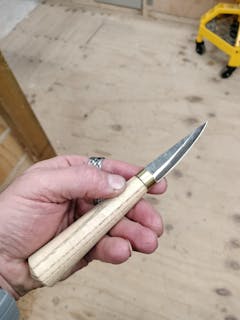Hand-Forged Camping (Chopping) Axe, 0.6 kg (1.32 Ibs)
Bushcraft Axe – Camping Hatchet 0.74 kg 1.63 lb
Hand-Forged Small Camping Axe with Curved Handle, 0.52 kg (1.15 Ibs)
What is a Bushcraft Axe?
Defining the Bushcraft Axe
Bushcraft axes blend the traditional tools of indigenous cultures with adaptations created by early settlers to survive in the wilderness. Today, a bush axe is a vital part of any outdoor survival tools kit. Generally, it is a medium-sized, portable, and multi-functional axe used to perform versatile tasks like firewood cutting, building shelters, splitting wood, crafting, and even hunting.
Key Features of a High-Quality Bushcraft Axe
The ideal bush axes depend on individual priorities, whether one values portability, chopping power, or ease of use for fine work. Regardless of its intended use, a bush axe often has the following features:
- Sharp Edge: The blade has a very sharp edge, often with a convex grind, which makes a bushcraft axe suitable for various tasks, from chopping wood to carving.
- Durable, Medium Size Handle: Modern composites or highly durable hickory or ash woods are used for handles. They provide good grip and shock absorption. The handle length ranges between 18 to 24 inches.
- Balanced Head Weight: The head of the axe should be properly balanced, with an average weight of 1-2.5 pounds (0,45-1,13 kilograms) to perform versatile tasks.
- Compact Size: Compared to traditional axes, camp axes are usually lighter and smaller, making them easier to carry and use with one hand if needed.
- Multifunctionality: The head is often slightly rounded to enable cuts from different angles and allow more control over finer work.
How Bushcraft Axes Differ from Other Axes
A bushcraft axe is intended to be a middle-ground tool, balancing portability and chopping power. It is larger and more versatile than bushcraft hatchets but lighter and more portable than full-size felling axes. Here’s a more detailed overview of how a bush axe differs from other types of axes:
- Felling Axe: Felling axes are much heavier, with weights ranging from 4 to 6 pounds (2 to 3 kg) and handle lengths of 28-36 inches. They are specifically designed to chop down trees, with long handles providing leverage for this type of work. The blade is thin and sharp to handle heavy-duty tasks efficiently.
- Splitting Axe: Splitting axes are mostly the same size as felling axes but may have a slightly heavier head, weighing 5 to 8 pounds (2,5 - 4 kg), with wedge-shaped blades. They are designed to split logs along the grain.
- Bushcraft Hatchet: Smaller and lighter than a camp axe, with a head weight of 1-2 pounds (0,5-1 kg) and handle length of 12-16 inches. A bushcraft hatchet is suited for small logs splitting and detailed work. Like camp axes, bushcraft hatchets are compact and can be used with one hand.
Top Uses for Bushcraft Axes
A bushcraft axe proves its worth in a variety of outdoor applications. Being compact and multifunctional, it has long become a key component of backpacking gear essentials and is widely used for the following activities:
- Carving and Crafting Tools: A smaller bush axe can be used for finer tasks such as carving wood. Choked up on the handle for more control during carving, it can tackle precision work, craft smaller items for camp projects, and create utensils like wooden spoons and bowls.
- Firewood Preparation: Many axe bushcraft tools can handle small to medium logs, chopping and splitting wood for fire-making.
- Trailblazing and Clearing Brush: With its sharp edge, a camp axe can clear an area for a campsite and a path through dense vegetation, create marks on tree trunks to mark trails, or establish a return route.
- Building a Shelter: Hiking and camping enthusiasts find a camping axe hatchet especially useful for sharpening stakes for securing tents or tarps and cutting branches for shelter building.
- Hunting and Game Processing: A bushcraft axe can split bones and larger pieces of meat, skin large game by making initial cuts, and prepare wood poles for stretching hides. It is also useful for building smoking or drying racks to preserve meat and cutting branches for trap construction.
How to Choose the Right Bushcraft Axe for Your Needs
When selecting from a range of woodcutting tools, it is crucial to find a balance between functionality and portability. Opting for a lightweight axe can make a big difference, especially during long hikes or extended camping trips. You may also want to consider handcrafted axes for their superior quality and adaptability to your needs. Here are a few more things to consider before making a purchase:
Identify Your Purpose:
- Specialized use: If you need a bush axe for a specific job like splitting firewood or clearing trails, go for the wood splitting hatchets built for these tasks, such as splitting mauls or double-bit axes.
- Fire-making: If you are mainly dealing with firewood, choose the tools for wood processing to handle heavy-duty tasks.
- Utility: For general bushcraft activities where versatility is essential, a utility axe with a balanced design is your best bet.
Consider Camp Axe Features:
- Size and Weight: A heavier axe head gives more chopping power, suitable for larger logs, whereas a lighter head is better for smaller tasks.
- Blade Shape and Material: Blades made from carbon or high-carbon steel with thicker bit shapes are better for splitting wood, while stainless steel blades with thinner bits are preferred for finer work. If you need a low-maintenance tool, search for high-carbon or stainless steel.
- Handle Material and Ergonomics: Longer handles provide more force for splitting, while shorter handles can handle precision work better.
Matching Axe to Your Comfort:
Selecting the right camp axe is like finding the perfect pair of shoes – it is all about the proper fit. Try out different sizes to see what suits your strength and usual tasks. For those just starting out, a 2,5-pound head with an 18-19 inch handle is a safe choice that covers a wide range of uses.
Common Mistakes to Avoid When Using a Bushcraft Axe
When using a bush axe, be mindful of these common mistakes to keep it in good condition and ready for use:
- Overstriking and Misuse: Overstriking occurs when the handle hits the wood instead of the axe head. Practice controlled swings and use the right type of axe for each task.
- Improper Sharpening Techniques: Incorrect sharpening can dull the blade fast or create uneven edges. To sharpen a bushcraft axe, understand the bevel first (for most camp axes, it is a convex bevel). Use a circular stone – it is portable and can be used wet – and move the stone rather than the axe. Begin sharpening close to the edge, then move back gradually. Switch sides to maintain symmetry, use a coarse stone for initial shaping and a finer stone to refine the edge. Switch grits as the edge sharpens.
- Cleaning and Storing: To prevent rust and damage, clean the camp axe after each use, dry it, and store it in a sheath to protect the blade.
Conclusion
Finding the best axes for bushcraft is only half the battle; actively using the axe builds familiarity and comfort, turning it into a valuable tool rather than an unused accessory.
As a final tip, always keep your bushcraft axe sharp and well-maintained, as it is not only more efficient but also safer to use. Regularly inspect the tool for signs of wear and replace it if necessary.
